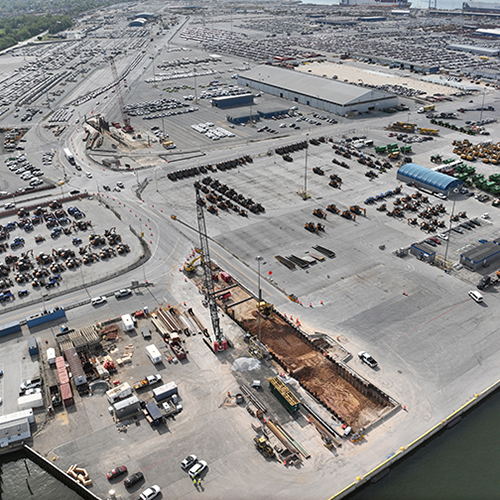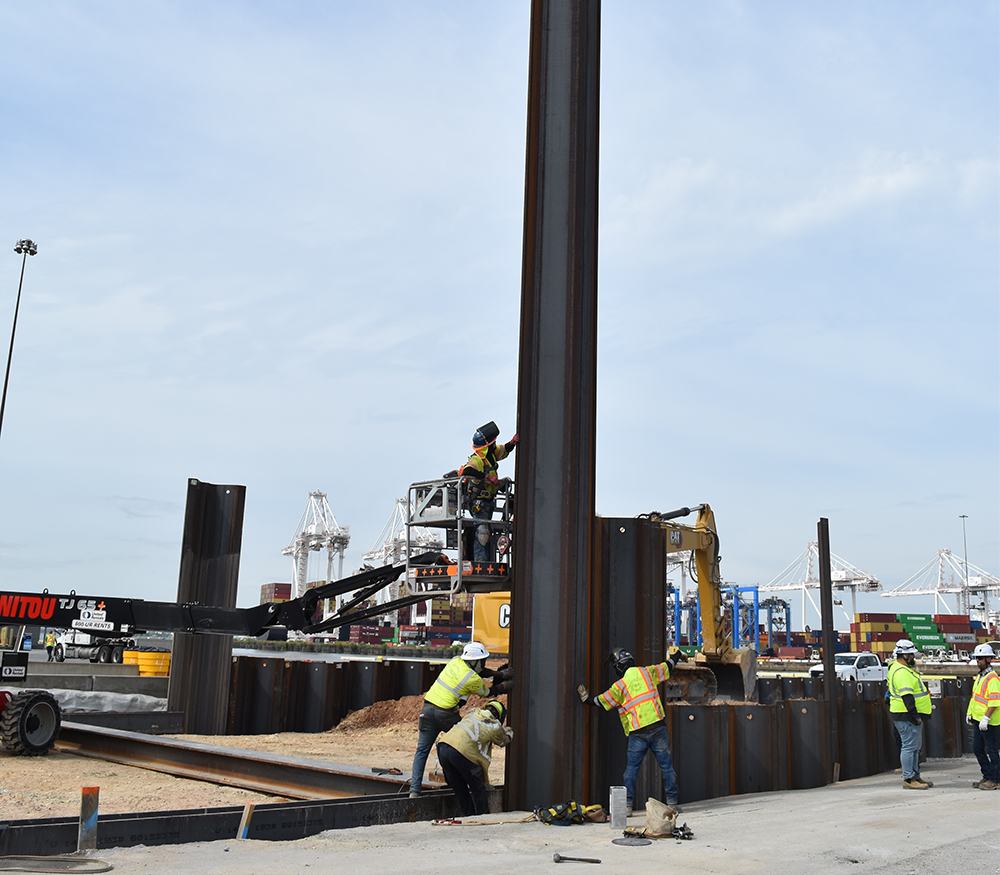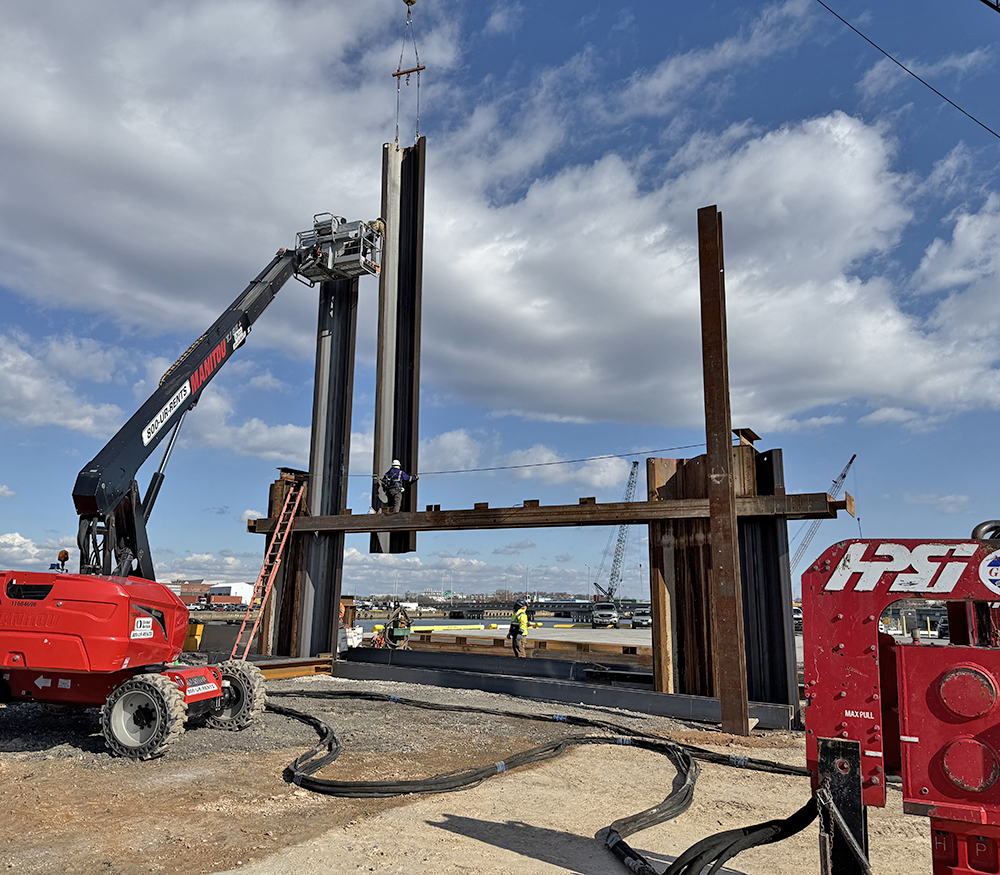MPA First Street Box Culvert Bid-Build Best Value
Dundalk, MD
| Location: | Dundalk, MD |
| Owner: | Maryland Port Administration (MPA) |
| Construction Company: | Fay, S&B USA Construction |
| Project Status: | Under construction since March 2025, expected completion in March 2027 |
Fay, S&B USA Construction (Fay) is installing a new precast concrete box culvert and storm drainage system as part of the Maryland Port Administration's (MPA) stormwater resiliency upgrades at the Dundalk Marine Terminal in Baltimore.
Improving Resiliency at Dundalk Marine Terminal
Project Highlights
- Coordination with Dundalk Marine Terminal tenants and Baltimore Gas & Electric
- Six maintenance of traffic phases to accommodate terminal operations
- Approximately 50 utilities cross the planned excavation areas, with about 20 utilities expected to require relocation or removal/replacement; some utilities must remain in service while they’re relocated
- Driven piles to support caps for the precast box culvert, as well as the pump station foundation and relieving platforms
- 40,000 cy of excavation
- 600 each steel H-piles measuring total of 42,000 lf
- 2,300 lf of precast concrete box culvert
- 48,560 lf of drainage pipe
The purpose of this project is to improve the Dundalk Marine Terminal’s stormwater resilience for future weather changes. This is vital because the Port of Baltimore contributes over $70 billion in economic activity to the area, as well as supporting over 50,000 jobs.
Spanning 570 acres with 13 berths, four container cranes and direct rail access, the Dundalk Marine Terminal is the largest and most versatile general cargo facility at the Port of Baltimore, according to the MPA. The Dundalk Terminal ranks as one of the nation’s top three automobile-handling ports and the leading US port for farm and construction equipment. This project is located in the same port as Fay’s previous Seagirt Marine Terminal Berth 3 project.
Challenge
The original project plans included two jack and bore operations underneath active rail lines. This process would require extensive ground stabilization; the operation was going to take up a large portion of the allotted schedule and would have prevented simultaneous work on the cast-in-place structures in the adjacent areas.Solution
Fay proposed a change to these operations to use an open-cut method instead. While the open-cut method would require a 25-day outage, it would drastically reduce the amount of construction time (the expected duration of Phase 4 utilizing an open cut is 12 months, versus 17 months utilizing a jack and bore—it also reduces the amount of work near active rail lines by nearly a year). As a result, this alternative will save the owner an estimated $1.4 million and eliminate risks for both Fay and MPA.Construction
Fay began excavation on site to install the new precast concrete box culvert and storm drainage system along a section of First Street, which is the main east-west roadway in the terminal. The box culvert will be almost entirely precast concrete. Once the area is excavated, crews will drive steel H-piles, pour concrete pile caps on-site, and the box culvert will then be placed on the pile caps.In addition to the box culvert, Fay is also responsible for installing a new 63-in pump station and connected weir structure, as well as new reinforced concrete pipe (RCP) storm drain and drainage structures including precast manholes and inlets that connect to the box culvert.
Work on this project will be performed in six maintenance of traffic phases to accommodate the other operations taking place at the Dundalk Marine Terminal.
Our Team is Ready to Help You
To learn how our team of heavy construction experts can help solve your infrastructure challenge with safe and innovative solutions, contact us.


